|
|
||||||||||||||||||||||||||||||||||||||||||||||||||||||||||||||||||||||||||||||||||||||||||||||||||||||||||||||||||||||||||||||||||||||||||||||||||||||||||
|
|
|
|
|
|||||
|
|
|
|
||||||
| Theory Of
Operation: The first (lower) L/C circuit generates enough reactance to bring the whole HF9V to resonance on 80 meters allowing it to act as a 1/4 l radiator. It also generates enough capacitive reactance to produce another discrete resonance at about 11 MHz. The second, 40 meter L/C circuit generates enough reactance to resonate the whole HF9V allowing it to act as a 1/4 l radiator. In order to minimize conductor and IČR losses an 80 and 40 meters where the antenna is physically shorter than a 1/4 l and thus operates with lower values of radiation resistance, large-diameter, self-supporting inductors and low-loss ceramic capacitors are employed. Where the height of the HF9V is slightly greater than a 1/4 l on 30 meters, an L/C series tuned circuit taps onto the 40 meter coil for the extra inductance to pull the earlier 11 MHz secondary resonance down to 10 MHz. At the same time, a portion of the 40 meter coil is shorted out which allows the circuit to resonate on 30 meters. The addition of this circuit also produces additional resonances at 14 MHz and 28 MHz. On 20 meters the entire radiator operates as a 3/8 l vertical with much higher radiation resistance and VSWR bandwidth than conventional or trapped antennas having a physical height of 1/4 l or less. Because the 20 meter radiation resistance will be several times greater than that of conventional vertical antennas, an electrical 1/4 l section of 75-ohm coax is used as a geometric mean transformer to match the 100-odd Ω of feedpoint impedance on that band to a 50 Ω main transmission line of any convenient length. The HF9V operates as a slightly extended 1/4 l radiator on 15 meters, with a 1/4 l stub decoupler providing practically lossless isolation of the upper half of the antenna on that band. On 10 meters the HF9V becomes a 3/4 l radiator with considerably greater radiation resistance and efficiency than 1/4 l trapped types. On 17 and 12 meters the coils act as packets of reactance which allow the entire radiator to operate as a 1/2 l or 5/8 l vertical. Capacitance for these circuits comes from what exists between the windings, the windings and the radiator, and the capacitance hat. On 6 meters the vertical wire, together with the adjacent section of antenna, form a short-circuited 1/4 l transmission line which cancels current flow. At the lower, open end of the 1/4 l section, a very high impedance is created that effectively divorces the upper part of the antenna leaving the lower section to radiate as a 3/4 l vertical. Tuning: After constructing and erecting the HF9V, you will need to tune the antenna to resonance on each of the nine bands. This is accomplished by adjusting the length of the coils, wires, and tap position. Reference to the diagram at the tope of this page in conjunction with the instructions on pages 8, 9 and 10 of the instruction manual will assist in this chore. Electrical And Mechanical Specifications: |
||||||||
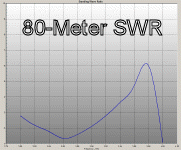 |
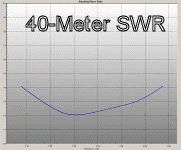 |
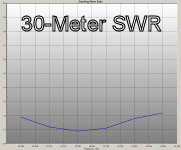 |
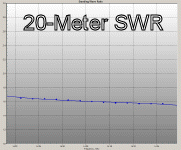 |
|||||
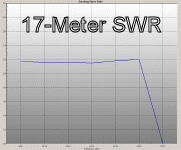 |
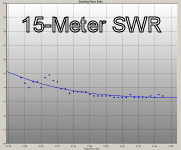 |
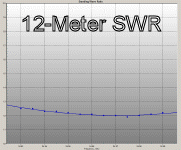 |
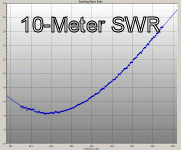 |
|||||
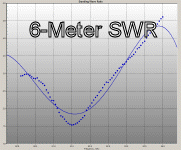 |
||||||||
| The SWR plots above were created with the LP-Plot utility program kindly provided by Larry Phipps, manufacturer of the LP-100A digital vector wattmeter. | ||||||||
|
|
||||
|
|
|||||||||||||||||||||
| Hits: [an error occurred while processing this directive] | Date of last edit: April 21, 2013 17:26:15 -0700 | |||||||||||||||||||||
| © Copyright: L. Dighera, 2012; All Rights Reserved: LDighera@att.net | ||||||||||||||||||||||


